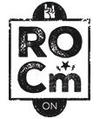« Previous 1 2
Translation tool with version control
Polyglot
Translation
Weblate considers translatable content in principle to be a Project , which is assigned all the parts to be translated that belong together (Figure 1). One example is the translation of an application into several languages with the corresponding documentation.
 Figure 1: The Weblate Dashboard lists the projects being translated. Clicking on a project name shows the components and the progress of their translations.
Figure 1: The Weblate Dashboard lists the projects being translated. Clicking on a project name shows the components and the progress of their translations.
The project forms the basis, above which are the components and the individual translations (Figure 2). The components define the VCS repositories, which in turn contain the files to be translated. The tool supports a whole range of translation formats.
The translation process is based on Git's push and pull principle. When developers make changes, they push them into the VCS repositories. Weblate pulls the changes from the repositories. If Weblate finds changes in the translations, it informs the translators, depending on the settings. The translators in turn deliver their work in the interface.
When the translation is finished, the commit follows through Weblate to the local repository. Depending on the settings, the tool then pushes back the finished translation. Weblate is thus suitable for continuous localization.
Conflict Potential
The merge phase is not completely free of potential conflicts. Users are therefore advised to make sure when updating the translation files that one component does not have multiple change files outstanding (Figure 3). To prevent this state, all existing changes can be pushed, during which the translation is locked until the desired changes have been made.
Weblate has set up a demo system [5] that you can manage online. There you will find the basic user interface with menu navigation and translation tasks. You can also make entries, look at the suggestions of other participants, and define languages.
Infos
- List of translation services: http://docs.weblate.org/en/latest/admin/machine.html
- Weblate on GitHub:https://github.com/WeblateOrg
- Weblate documentation: https://docs.weblate.org/en/latest/index.html
- Hosting: https://weblate.org/en/hosting/
- Online demo: https://demo.weblate.org
« Previous 1 2
Buy this article as PDF
(incl. VAT)
Buy ADMIN Magazine
Subscribe to our ADMIN Newsletters
Subscribe to our Linux Newsletters
Find Linux and Open Source Jobs
Most Popular
Support Our Work
ADMIN content is made possible with support from readers like you. Please consider contributing when you've found an article to be beneficial.








